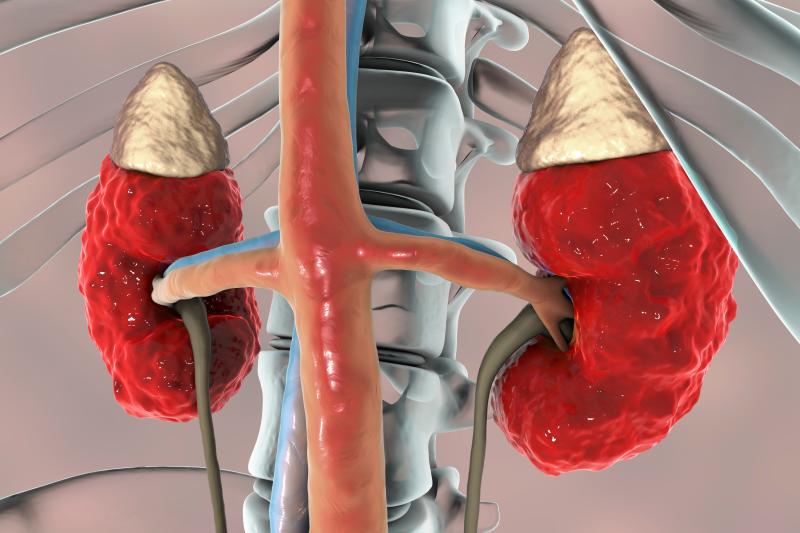
High cumulative blood pressure (BP) loads appear to be associated with increased risk of chronic kidney disease (CKD), as reported in a prospective study.
Researchers used data from the Korean Genome and Epidemiology Study and looked at 5,221 participants without CKD at baseline. Cumulative systolic and diastolic BP (SBP and DBP) loads were estimated as the ratios of the areas under the curve (AUC) for SBP ≥120 mm Hg or DBP ≥80 mm Hg, then divided by the AUC for all SBP or DBP measurements during the exposure period. The AUCs were then grouped into four, as follows: group 0 (reference, cumulative BP load of 0) and groups 1–3 (tertiles of cumulative BP loads).
The primary endpoint of incident CKD was identified using the following criteria: a composite of an estimated glomerular filtration rate (eGFR) <60 mL/min/1.73 m2 or proteinuria >1+ on dipstick examination for at least two consecutive measurements ≥90 days apart.
Multivariable Cox proportional hazards regression showed that higher cumulative SBP and DBP loads were associated with increased risk of CKD, with each 1.0-unit increase in the cumulative SBP and DBP loads carrying a 23-percent (hazard ratio [HR], 1.23, 95 percent confidence interval [CI], 1.12–1.35) and 14-percent (HR, 1.14, 95 percent CI, 1.04–1.26) risk increase, respectively.
Looking at the BP tertiles and the reference, the risk of CKD was higher by 1.94- and 1.89-fold in SBP groups 2 and 3, respectively, than in group 0. The same was true for DBP, where the risk of CKD was 1.42- and 1.54-fold greater in groups 2 and 3, respectively.
The associations were observed in subgroups of patients not taking antihypertensive agents or without prior hypertension diagnosis.
The study was limited by the reliance on eGFR and spot urine tests to assess CKD outcomes.